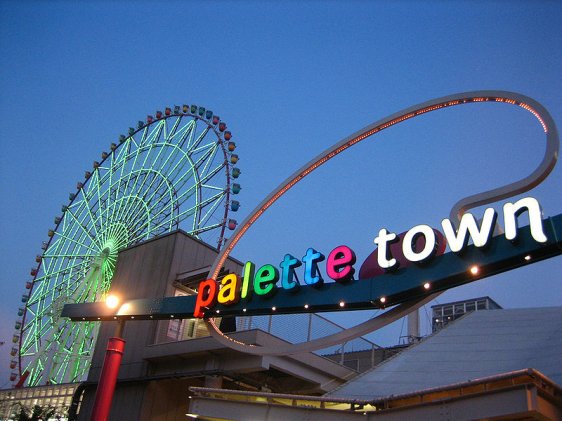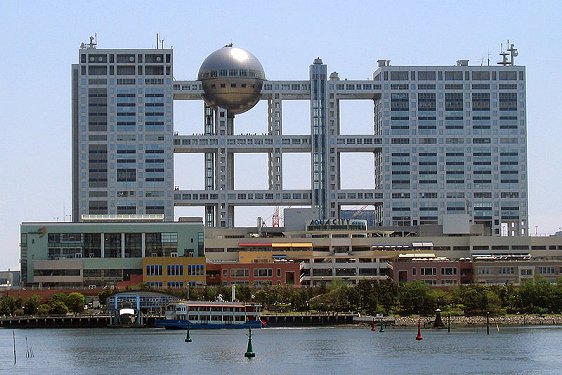|
Odaiba is an artificial island in Tokyo Bay. It is located within Koto and Minato wards. Although it was created as early as the 1850's, for defensive purposes, Odaiba took on a new role towards the end of the 20th century, when it was develped as an entertainment, commercial and residential precinct. It is the only place in Tokyo where the seashore is accessible. Within the Greater Tokyo Metropolitan Area, only Minato Mirai 21 in Yokohama enjoys a similar seashore access.  Palette Town, Odaiba, Tokyo Palette Town, Odaiba, TokyoSource: http://commons.wikimedia.org/wiki/File:Palette_Town_en_Odaiba.jpg Author: Sasanoha  Odaiba was created in 1853 by Egawa Hidetatsu as six island fortresses. These are to provide a defensive line protecting Edo against attacks from the sea. There were eleven batteries planned, though only five were completed. Modern development of Odaiba took place under the leadership of Shunichi Suzuki, the governor of Tokyo, in the 1990's. The idea was to create Tokyo Teleport Town, an experimental showcase of futuristic lifestyle comprising residential and commercial development, and holding a population of over 100,000. Many companies were set up specially to develop Odaiba. Odaiba is connected to the city by the Rainbow Bridge and the Yurikamome Rapid Transit Line. Moreover commuting to Odaiba is regarded as tedious and time consuming. This led to underpopulated blocks and many vacant lots. When the Japanese retail estate economic bubble burst, the companies developing Odaiba became practically bankrupt. Suzuki's successor Yukio Aoshima stopped the project in 1995, after over ¥1 trillion have been spent.  Fuji Television building, with Aqua City Odaiba in the foreground Fuji Television building, with Aqua City Odaiba in the foregroundSource: http://commons.wikimedia.org/wiki/File:Fuji_TV_headquarters_and_Aqua_City_Odaiba_-_2006-05-03_edit.jpg Author: Mike J. Nelson  There was a change of plans in the late 1990 and Odaiba was redeveloped as a tourist and leisure precinct. Hotels and shopping malls were built there. A few companies also relocated their headquarters to the island, among them Fuji Television. Tokyo Big Sight, the convention center that was originally planned to be Governor Suzuki's intercity convention center, became a venue for international expos. How to reach OdaibaBy RoadTake the Shuto Expressway across Rainbow Bridge from central Tokyo or the Tokyo Port Tunnel from Shinagawa ward. By Train Take the Yurikamome transit from the Shimbashi Station or Toyosu Station. By Boat There are ferry services to Odaiba from Asakusa on the Sumida River and Kasai Rinkai Park in eastern Tokyo. What to see in Odaiba
|

 Go Back
Go Back

